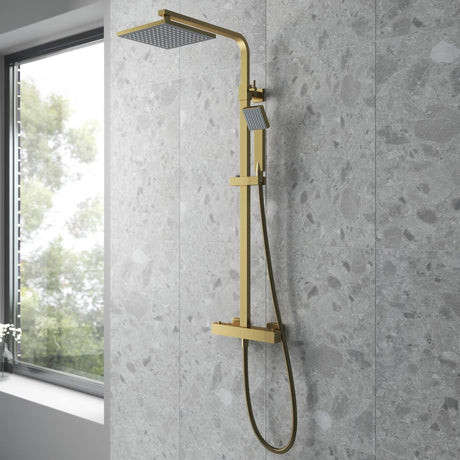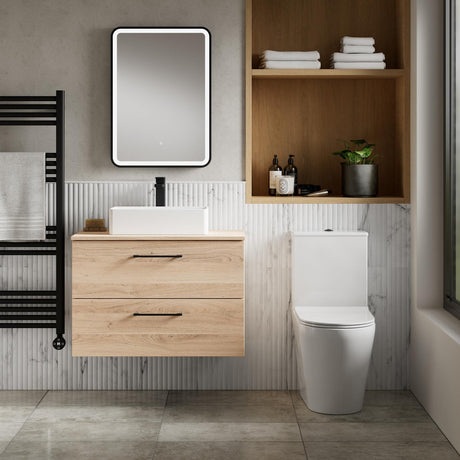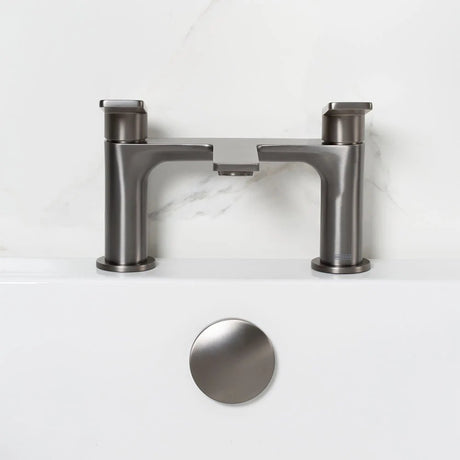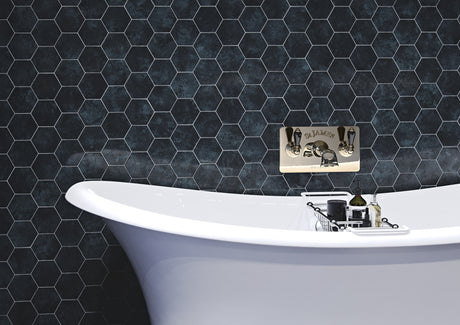Standing water pooling around your ankles during a shower signals one clear problem: a blocked drain. This common household issue affects thousands of UK homes each year, turning your daily routine into a frustrating experience. The good news is that most clogged shower drains can be cleared using simple tools and household items, without calling a professional plumber.
This guide from Asturias Bathrooms walks you through proven methods to unclog your shower drain quickly and safely, plus essential prevention tips to stop future blockages.
Signs Your Shower Drain Is Blocked
Recognising early warning signs helps you address drainage problems before they worsen:
Standing water is the most obvious indicator. Water that remains in your shower tray after use, or rises during washing, clearly shows restricted drainage.
Slow drainage often appears first. You might notice water taking longer than usual to disappear, creating small pools that linger after your shower.
Unpleasant odours from the drain suggest trapped debris decomposing in the pipes. This musty or sulphurous smell typically worsens over time.
Gurgling sounds when water drains indicate air struggling to pass through partially blocked pipes.
What Causes Shower Drain Blockages
Understanding the root causes helps you choose the right unblocking method and prevent future problems.
Hair accumulation tops the list of culprits. Every shower sees hundreds of hair strands washing away, with longer hair particularly problematic. These strands catch on pipe walls and trap other debris.
Soap scum buildup occurs when soap residue combines with hard water minerals. This sticky film coats pipe walls and binds hair, skin cells, and other particles into solid clumps.
Dead skin cells shed naturally during washing. While individually tiny, millions of these cells can accumulate over time, especially when combined with hair and soap residue.
Hard water mineral deposits leave chalky buildup on pipe walls. These deposits narrow the pipe diameter and provide surfaces for other debris to stick to.
Small objects occasionally cause sudden blockages. Toothpaste caps, razor covers, and children's toys can slip down drains and lodge at pipe bends.
7 Proven Methods to Unblock Your Shower Drain
1. Boiling Water Flush
Start with the simplest solution. Boil a full kettle of water and pour it down the drain in two or three stages, allowing 30 seconds between each pour. The heat dissolves soap buildup and loosens greasy deposits.
Important safety note: Let boiling water cool for one minute before pouring if you have plastic pipes or acrylic shower trays to prevent damage.
2. Baking Soda and Vinegar Method
This natural cleaning solution is perfect for tackling organic blockages, even in shower enclosures. Begin by pouring one cup of baking soda into the drain, followed by one cup of white vinegar. Cover the drain with a plug or a damp cloth to trap the fizzing reaction.
Allow it to sit for 15 minutes (or up to an hour for more stubborn clogs), then rinse thoroughly with hot water. For added cleaning power, combine half a cup of table salt with the baking soda before adding the vinegar.
3. Manual Hair Removal
Remove the drain cover by unscrewing the central screw. Use a torch to locate visible hair clumps, then extract them using:
- Rubber gloves and fingers
- Tweezers or needle-nose pliers
- A straightened wire coat hanger with a small hook bent at the end
This direct approach works particularly well for surface-level hair blockages.
4. Plunger Method
Use a standard plunger for this technique. First, block the overflow outlet with a wet cloth to create proper suction. Add enough water to cover the plunger cup, then position it over the drain opening.
Apply petroleum jelly around the plunger rim for a better seal. Push down slowly to expel air, then pump vigorously 10-15 times. Release the suction quickly and check if water drains freely.
5. Dish Soap Lubrication
Squeeze a generous amount of washing-up liquid (about 60ml) directly into the drain. The soap acts as a lubricant, helping hair clumps slide through the pipes more easily.
Wait 10 minutes for the soap to work, then flush with very hot water poured in one continuous stream.
6. Drain Snake or Auger
For deeper blockages, a plumber's snake (also called a drain auger) can break through stubborn clogs. Feed the flexible cable down the drain until you feel resistance, then rotate the handle while pushing gently.
The snake's tip should grab or break apart the blockage. Withdraw the cable slowly and flush the drain with hot water to clear remaining debris.
7. Commercial Drain Cleaners (Last Resort)
Chemical drain cleaners should only be used when other methods fail. Always check your shower tray manufacturer's warranty information before using chemical products, as some void warranties.
Choose a product suitable for your pipe material and follow safety instructions exactly:
- Wear protective gloves and eyewear
- Ensure good ventilation
- Never mix different chemical products
- Pour slowly and step back immediately
When to Call a Professional Plumber
Contact a qualified plumber if:
- Multiple attempts with different methods fail to clear the blockage
- Water backs up into other bathroom fixtures
- You suspect the main sewer line is blocked
- The problem recurs frequently despite preventive measures
- You're uncomfortable using chemical drain cleaners safely
Preventing Future Shower Drain Blockages
Prevention proves far easier than clearing established blockages.
Install a hair catcher or drain screen over your shower waste. These inexpensive devices trap hair and debris before they enter the pipes. Empty the catcher after each shower for best results.
Flush with hot water regularly. Run hot tap water for two minutes weekly, or pour a kettle of hot water down the drain monthly. This routine melts soap residue and flushes away small particles.
Brush hair before showering to remove loose strands that would otherwise wash down the drain. This simple habit significantly reduces hair accumulation in pipes.
Use liquid soap instead of bars when possible. Bar soaps create more residue when mixed with hard water, contributing to pipe buildup.
Consider water softening if you live in a hard water area. A water softener reduces mineral deposits that bind with soap and hair to create stubborn blockages.
Monthly maintenance cleaning keeps drains flowing freely. Pour one cup of white vinegar down the drain, leave for 30 minutes, then flush with hot water. Alternatively, use enzyme-based cleaners that digest organic matter safely.
Take Action Before Problems Worsen
A blocked shower drain won't resolve itself and typically worsens over time. Start with gentle methods like hot water flushes and natural cleaners before progressing to mechanical solutions or chemical products.
Regular maintenance prevents most drainage problems, saving you time and expense in the long run. Install a simple hair catcher today and establish a monthly cleaning routine to keep your shower draining properly.
For persistent blockages or recurring problems, don't hesitate to contact a professional plumber who can diagnose underlying issues and provide lasting solutions.
For more bathroom maintenance guidance, installation tips, and product recommendations to keep your bathroom in peak condition, explore our collection of how-to and buying guides on Asturias Bathrooms. Our expert advice covers everything from basic maintenance to complete bathroom renovations, helping you create and maintain the perfect bathroom.














